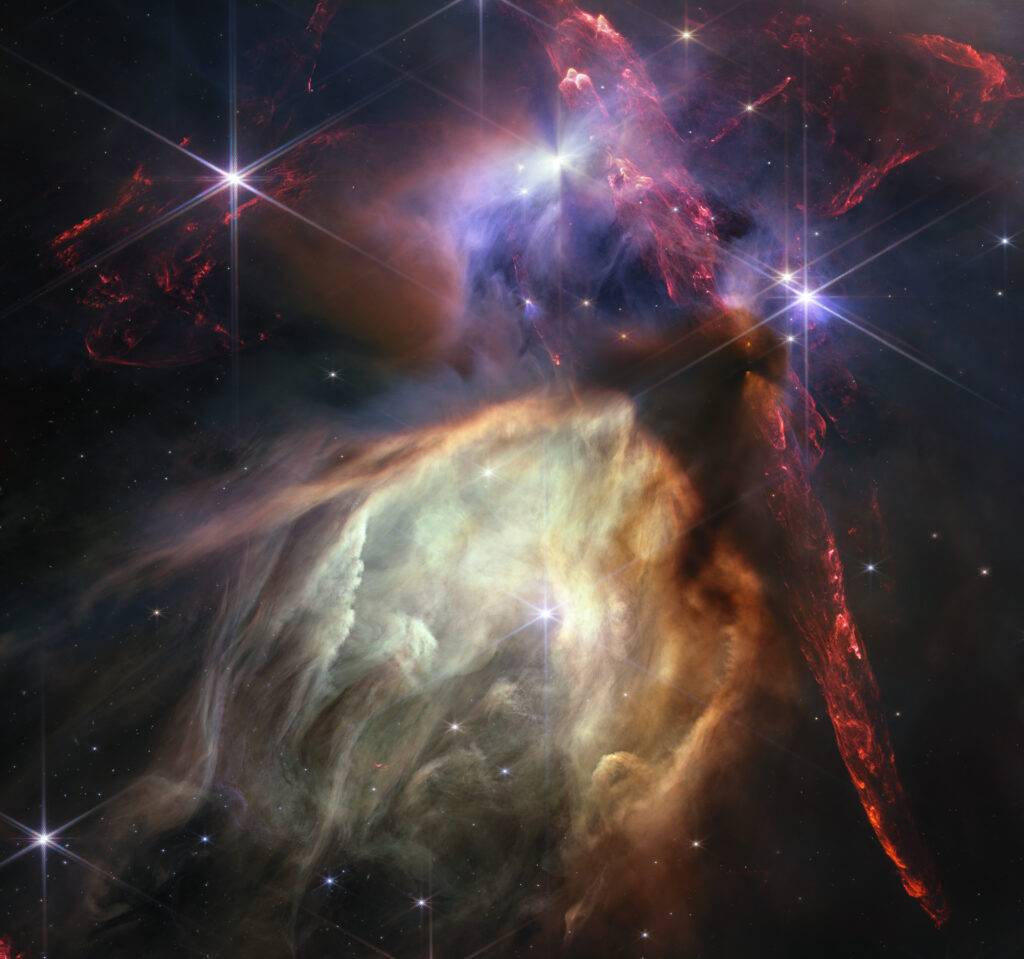In honor of the first anniversary of the launch of the James Webb telescope (JWST), NASA and ESA have published its new colorful image. The image shows one of the closest stellar maternity hospitals to Earth.

In the JWST photo, you can see the molecular cloud of Rho Ophiuchi. It is located at a distance of 390 light-years from Earth and is a dark nebula with inclusions of ionized hydrogen regions. It owes its name to a bright star that is part of this complex.
Despite the relatively modest size by the standards of the Milky Way, the Rho Ophiuchi region is of great interest to astronomers. After all, it is one of the closest stellar birth houses to Earth. Right now, new luminaries are actively forming in its depths.
According to astronomers, there are about 50 protostars on the captured JWST site, which have masses comparable to the mass of the Sun, or less. The dark regions correspond to the densest regions where the forming protostars are still surrounded by a dust cocoon. As for the characteristic red jets, these are jets of molecular hydrogen. They occur when a newborn star breaks through the cocoon surrounding it for the first time, throwing its substance into the surrounding space.
We can also pay attention to the characteristic structure at the bottom of the image, resembling a glowing cave. It is a cavity that was “cut out” by the powerful radiation of the S1 star in the surrounding gas and dust clouds. This is the only star in the picture that is significantly more massive than the Sun.
According to the researchers, JWST allowed them to see previously unknown details of the Rho Ophiuchi. Since the phase that the stars of the complex undergo is very fleeting by astronomical standards, these data are very important because they help shed light on the details of the process that led to the birth of the Solar System 5 billion years ago.
Recall that James Webb recently showed an ancient galaxy in 3D.
According to https://www.nasa.gov
Follow us on Twitter to get the most interesting space news in time
https://twitter.com/ust_magazine
